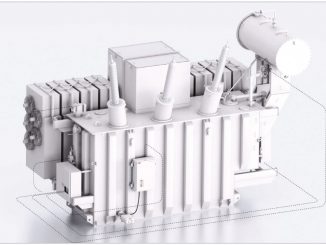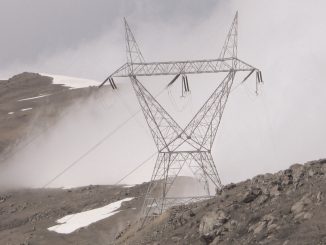
Financing activity in the power sector remained subdued in the past year. Although the sector has showed some improvement owing to several government initiatives such as the Ujwal Discom Assurance Yojana (UDAY), the Integrated Power Development Scheme (IPDS) and the Deendayal Upadhyaya Gram Jyoti Yojana (DDUGJY); however, outcomes are not yet uniform across states. Further, the sector continues to be weighed down by persistent challenges such as stalled projects due to lack of fuel supply and power purchase agreements, operational inefficiencies of discoms, and the overall low demand for power, which continue to impede investments. Meanwhile, the sector also witnessed some activity with respect to mergers and acquisitions (M&A), mainly driven by the need to revive the stressed assets.
Power Line takes a look at some of the key developments in the power sector’s financing scenario over the past year…
Debt
The two leading public financial institutions that fund the power sector in India, the Power Finance Corporation (PFC) and the Rural Electrification Corporation (REC) witnessed a positive year-on-year growth in terms of loan sanctions as well as disbursements. In 2016-17, the sanctions issued by PFC crossed the Rs 1,000 billion mark, a growth of about 54 per cent compared to Rs 650.4 billion of sanctions issued in 2015-16. Besides, PFC’s disbursements recorded significant growth of 34.8 per cent in 2016-17. In addition, Rs 39,140 million was disbursed by the company under the IPDS and the Restructured Accelerated Power Development and Reforms Programme, for which PFC is the nodal agency. Meanwhile, loans worth Rs 838.7 billion were sanctioned by REC in 2016-17, a year-on-year growth of 28.1 per cent. Disbursements by the company recorded an even higher growth rate of 30.5 per cent, increasing from Rs 506.3 billion in 2015-16 to Rs 660.7 billion in 2016-17. The disbursements included Rs 80,375 million of funds released by the states under the DDUGJY. While the thermal generation segment continued to dominate the loan sanctions and disbursements by REC, there has been an increased focus on renewable energy projects.
Meanwhile, there was a decline in fresh lending by commercial banks to the power sector during 2016-17. While the growth in credit extended by commercial banks had already been on a downward trend over the past few years, it contracted for the first time in 2016-17. According to Reserve Bank of India (RBI) estimates, as of March 2017, the gross commercial bank credit extended to the power sector stood at Rs 5.25 trillion, a decline of 9.4 per cent over the Rs 5.79 trillion as of March 2015. The key reason for the contraction in bank credit has been its substitution by UDAY bonds.
Moreover, as of July 2017, the banking sector’s exposure to the power sector remained the same with no visible growth in credit. However, the power sector continues to account for the largest share (19.6 per cent) in banks’ exposure in overall industrial credit (Rs 26.8 trillion). The power sector has been one of the chief contributors to the stressed assets of nearly Rs 1 trillion in the banking industry. According to industry estimates, stressed assets of the power sector, including restructured standard assets, were estimated at Rs 553 billion in 2015-16.
Meanwhile, external commercial borrowings (ECBs) have witnessed a declining trend over the past few years as Indian companies opted for bonds (owing to lower costs and longer tenors) over loans to tap overseas funds. As per RBI estimates, ECBs declined by 9.8 per cent in the past year, from $1.38 billion in 2015-16 to $1.25 billion in 2016-17. The major bond issues include REC’s maiden green bonds to raise $450 million, listed on the London Stock Exchange and Singapore Stock Exchange in June 2017; NTPC Limited’s Euro 500 million overseas bond issue in January 2017; the Greenko Group’s $1 billion overseas bond issue; and ReNew Power Ventures $475 million overseas bond issue in February 2017.
Foreign direct investment (FDI) inflow in the power sector recorded a remarkable year-on-year growth of over 20 per cent in 2016-17. As per RBI estimates, FDI was $1,112 million in 2016-17 compared to $918.82 million in 2015-16.
One of the key highlights of the past year was the completion of the process of issuance of bonds under UDAY. The scheme envisaged the state governments to take over 75 per cent of discom debt and pay back the same by issuing bonds. As of March 31, 2017, bonds worth Rs 2.32 trillion were issued by 15 states – Bihar, Chhattisgarh, Haryana, Jammu & Kashmir, Jharkhand, Punjab, Uttar Pradesh, Rajasthan, Andhra Pradesh, Madhya Pradesh, Maharashtra, Himachal Pradesh, Telangana, Tamil Nadu and Meghalaya. Assam is the only state that has signed up for financial performance improvement but has not issued bonds since its debt was already in the form of state government loans. Five states, namely, Rajasthan, Uttar Pradesh, Haryana, Tamil Nadu and Punjab, account for over 80 per cent of the bonds issued under the scheme.
The union budget has earmarked a total outlay of Rs 138.81 billion for the Ministry of Power in 2017-18, an increase of 33 per cent over the Rs 104.76 billion (revised) allocated during 2016-17. Amongst the key budget proposals, the annual allocations for the DDUGJY and the IPDS have been increased. For the DDUGJY, the allocation has been increased by 43.7 per cent to Rs 48.14 billion, as compared to the budget estimate (revised) of Rs 33.5 billion for 2016-17. Meanwhile, for the IPDS, the allocation is Rs 58.21 billion, 28.6 per cent more than that for 2016-17.
Equity
Activity in the equity market remained low during 2016-17 as in the past few years. Most of the investments that took place through equity were concentrated in the renewable energy sector. One of the key developments, however, was the opening up of infrastructure investment trusts (InvITs) in the power sector. The India Grid Trust (IndiGrid), the first InvIT of the sector, successfully completed its initial public offering in May 2017. IndiGrid was launched in October 2016 by Sterlite Power Grid Ventures Limited in order to reduce its debt burden and invest in future projects. The successful listing of IndiGrid has opened up new avenues for other transmission system firms to exit completed projects and deleverage their balance sheets. Reportedly, Reliance Infrastructure also has plans to launch an InvIT. In fact, it has received the Securities and Exchange Board of India’s approval for the same.
Meanwhile, M&A activity in the power sector continues to be driven by the need to recover stressed assets. To this end, banks (that have funds locked in stressed projects) and cash-strapped promoters have been seeking new takers. Further, state-owned companies including NTPC and NLC India Limited are expected to play a key role by acquiring stressed assets or operating them. The Government of India is also exploring the possibility of creating stressed assets equity and stressed assets lending funds with PFC and REC.
In January 2017, an MoU was signed, under which NTPC would acquire Rajasthan Rajya Vidyut Utpadan Nigam Limited’s Chhabra thermal power plant (TPP) Stage I (4×250 MW) and Stage II (2×660 MW). While the acquisition of Stage I with an estimated valuation of Rs 40 billion is expected to be completed by November 2017, Stage II will be acquired after the project gets commissioned. Reportedly, NLC India has plans to acquire Phase I of the 1,320 MW Raghunathpur TPP (owned by the Damodar Valley Corporation) and the GMR Group’s 1,370 MW coal-based power plant in Chhattisgarh.
Some of the M&A deals that took place during the year are: the purchase of Meenakshi Energy Private Limited’s 1,000 MW Nellore TPP by India Power Corporation Limited in November 2016, the acquisition of 10 per cent stake (worth $200 million) in ReNew Power by JERA Company, Inc. in February 2017, the acquisition of 1.5 GW of SunEdison’s solar assets in India by Greenko Energy Holdings, and the completion of 100 per cent share purchase in Welspun Renewable Energy Private Limited by Tata Power Renewable Energy Limited.
Although the strategic debt restructuring (SDR) scheme has not been very effective so far, as banks have not been able to find buyers for their stressed assets, there has been some activity on this front in the past few months. The Edelweiss Asset Reconstruction Company purchased 51 per cent stake from the lender consortium of Adhunik Power and Natural Resources Limited in June 2017. In February 2017, 814.4 million shares of Jaiprakash Power Ventures Limited were acquired by ICICI Bank through the conversion of debentures into equity under SDR. These stake sales provide some hope for selling more assets under the scheme.
Outlook
The outlook for investment in the power sector appears to be positive, on the back of various government initiatives and activity in the renewable energy space to meet the 175 GW target by 2022. However, continued efforts and a more hands-on approach by policymakers would be needed to address the issue of stressed assets and send the right message to future investors.



